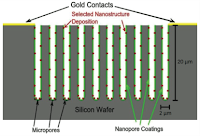Podophyllotoxin
is a potent antimitotic agent. Podophyllin is a resinous extract of medicinal
plants Podophyllum emodi and Podophyllum peltatum belonging to the family
Berbideraceae in which the podophyllotoxin is one of the main constituent. The
toxicity of podophyllotoxin liberates as diarrhea, nausea, vomiting. Hence
modifications in podophyllotoxin structure are required to reduce its toxicity
and to enhance its biological activity. The biologically active and lesscytotoxic new tetralone intermediates of podophyllotoxin have been synthesized.
The modification of podophyllotoxin structure might enhance the biological
activity with favorable solubility and reduced toxicity. Some synthesized
analogues of podophyllotoxin showed better antibacterial activity. The
structures of the synthesized new tetralone compounds were confirmed by IR,
1H-NMR, 13C-NMR and Mass spectral data. They will be screened for biological
activities.
Recent advances in matrix-assisted laser
desorption ionization (MALDI) mass spectrometry imaging (MSI) have led to the
direct analysis of tissue slices. The major advantage of MSI is its capability
of simultaneously localizing and identifying a parent molecule and its
metabolites without any labeling or any prior knowledge. MSI has beenextensively employed to detect the differentiated pattern of lipids in variousorgans in different diseases, such as brains in Alzheimer’s disease. Poor
reproducibility of MALDI MSI analysis due to the heterogeneity of the
matrix-analyte crystals, hinders its use on quantitative analysis. In addition,
discontinuous ion flow due to quickly consumption of the samples under laser
irradiation on specific site affects its ability in qualitative analysis.
Although electrospray ionization mass spectrometry (ESI-MS) cannot directly be
used for imaging, ESI tandem mass spectrometry (LC/ESI-MS/MS) can separate and
distinguish gangliosides.

Zhang et al. have presented a promising
workflow for qualitative, semi-quantitative and in situ analysis ofgangliosides by combining the MALDI MSI and ESI-MS. Following obtaining the
brain from the mice, fresh-frozen murine brain sections were prepared and
coated with matrix for subsequent MALDI MSI analysis. On the other hand, lipid
was extracted from brain tissue by Bligh and Dyer method. The gangliosides
extracts were re-suspended in water for ESI-MS analysis.
Many studies
have been conducted assessing biological changes in patients with both somatic
and psychiatric conditions. Most studies of posttraumatic stress disorder
(PTSD) have focused on the primary stress pathway: the
hypothalamus-pituitary-adrenal axis (HPA), which is activated during acute
stress. The hypothalamus secretes corticotropin-releasing factor (CRF) whichstimulates the pituitary to release adrenocorticotropic hormone (ACTH),
resulting in the production of glucocorticoids and other steroids in the
adrenal cortex. It is known that the secretion of cortisol is associated with
the natural circadian rhythm, and the assessment of cortisol concentrations
should be adjusted for the diurnal variation, with peak values in the morning
just after awakening. As cortisol is one of the end products of the
glucocorticoid biosynthesis pathway, it can be assumed that the biosynthesis of
glucocorticoids upstream and other steroids also are affected by diurnal
variations.
Biomass
refers to renewable organic materials, including agricultural products and
agricultural wastes, wood and its wastes, animal wastes, urban wastes, aquatic
plants, and so on. Lignocellulosic materials are the most abundant renewableorganic biomass on Earth, being constantly generated through photosynthesis and
existing in large numbers and wide variety from the forest to the sea. This
biomass is emerging as an energy source among many kinds of new energy
including wind energy, hydroenergy, solar energy, nuclear energy, etc.

The use of
biomass instead of coal and oil to produce chemical substances that satisfy
human requirements has begun to be gradually considered by scientists since the
late 1960s when the negative impact of the coal and petroleum chemical industryon the environment was recognized. Besides that, a shortage of fossil energy is
considered a serious problem.Therefore,
lignocellulosic biomass not only can ease energy and environmental problems,
but also it is renewable. Furthermore all, the proposal of recycling economy
and sustainable development strategies, conversion, and research in the
application of natural lignocellulosic feedstock are highly valued and widely
used. Because of this, lignocelluloses biotechnology has achieved rapid
development in recent decades and expanded the research field significantly.
Because the requirements for the detection,
monitoring, and transformation of environmental constituents are increasing at
a significant rate developing sensor interfaces must be sensitive to low level
exposures and have fast response times. As concerns about the impact of gases
on health and environmental concerns increase, the reliable detection of
several gases over a range of temperatures has become a priority. Included inthis group, NOx associated with air pollution, combustion, and respiratorydisease is critical. NO is the primary monitor of an asthmatic attack and can
also provide rapidly accessed noninvasive disease detection. NH3, which plays
an especially important role in urban environments, also is produced albeit at
much lower levels, during an asthma attack.




